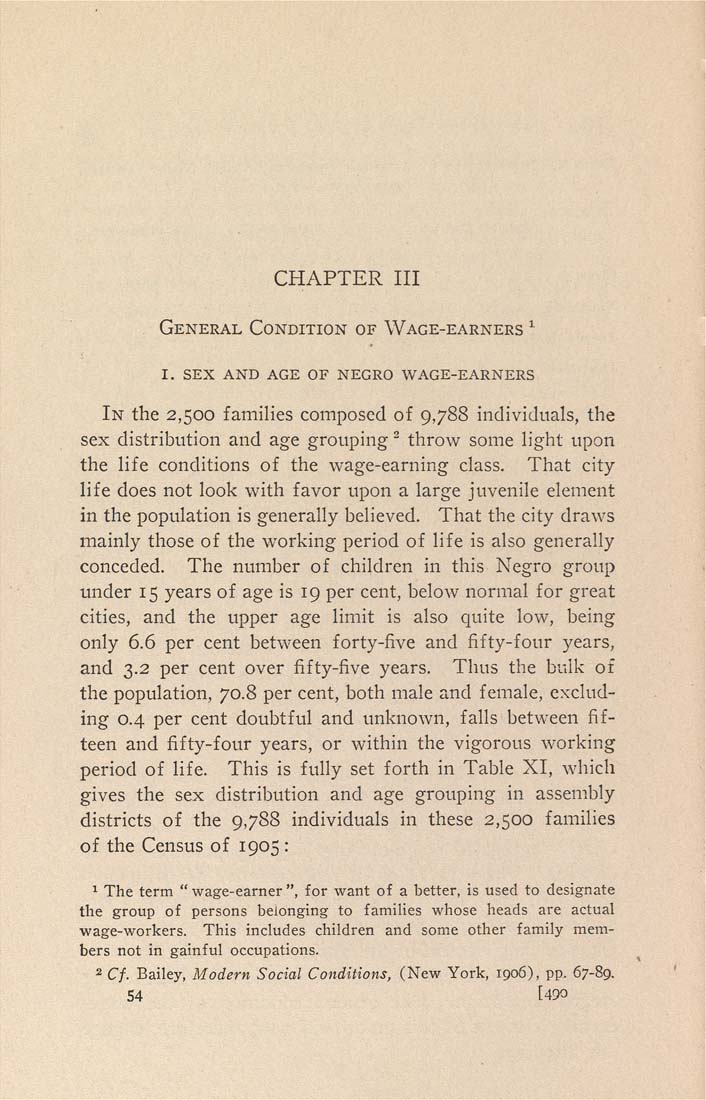CHAPTER III
General Condition of Wage-earners ^
I. SEX AND age of NEGRO WAGE-EARNERS
In the 2,500 families composed of 9,788 individuals, the
sex distribution and age grouping ^ throw some light upon
the life conditions of the wage-earning class. That city
life does not look with favor upon a large juvenile element
in the population is generally believed. That the city draws
mainly those of the working period of life is also generally
conceded. The number of children in this Negro group
under 15 years of age is 19 per cent, below normal for great
cities, and the upper age limit is also quite low, being
only 6.6 per cent between forty-five and fifty-four years,
and 3.2 per cent over fifty-five years. Thus the bulk of
the population, 70.8 per cent, both male and female, exclud¬
ing 0.4 per cent doubtful and unknown, falls between fif¬
teen and fifty-four years, or within the vigorous working
period of life. This is fully set forth in Table XI, which
gives the sex distribution and age grouping in assembly
districts of the 9,788 individuals in these 2,500 families
of the Census of 1905:
1 The term "wage-earner", for want of a better, is used to designate
the group of persons belonging to families whose heads are actual
wage-workers. This includes children and some other family mem¬
bers not in gainful occupations.
2 Cf. Bailey, Modern Social Conditions, (New York, 1906), pp. 67-89.
54 [490
|








